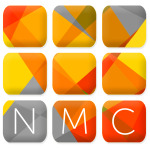Podcasting aficionados, it's time to amplify your voice with the perfect mic! Geekanoids brings you the definitive list of the best podcasting microphones to suit every need and budget.
For the wandering podcaster, the Rode SmartLav+ offers unparalleled convenience as a lavalier microphone. This is perfect to vlog on the go or indeed capture on location snippets of audio that could later become part of your podcast.
When versatility is key, the Blue Microphones Yeti Nano has been around for a long time and stands out for its adaptable recording patterns. However, if you're diving into voice recordings, the Rode Podmic is your go-to for rich, warm audio that captivates listeners. In fact, I have personally used the Rode Podmic USB (which has both XLR and USB connectivity) for my own recordings and have always been impressed.
Do you crave that studio-quality sound without breaking the bank? Look no further than a brand that may well not be on your radar. The Earthworks Audio EVO looks absolutely stunning and the tonal quality is exceptional. This would certainly be one of my top picks.
The Shure SM7dB reigns supreme as the all-around champion for podcasting, delivering professional-grade audio that has graced the studios of podcast legends. This new version has a beefier output, so is a little easier to use in your audio production setup.
If you are ready to let your voice be hard and elevate your podcast to the next level, snag your ideal microphone and capture every nuance of your vocal brilliance. Stay tuned for more of the latest geek findings in the world of podcasting, only on Geekanoids.



